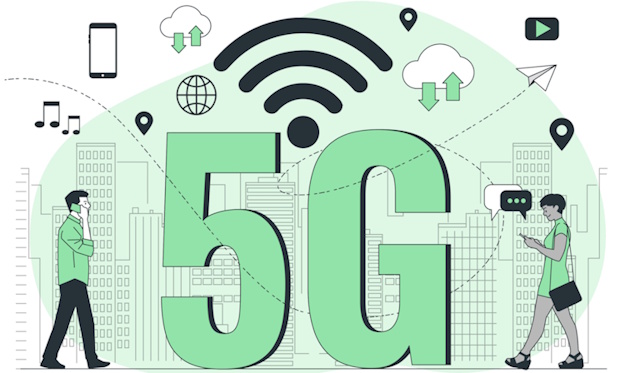As Canada strides into a new era of digital connectivity, the rollout of 5G networks across the nation marks a pivotal transformation in our telecommunication landscape. This evolution from 4G to 5G is not just a step but a giant leap, offering Canadians unprecedented speeds and reliability that promise to reshape how we connect, communicate, and consume digital content.
Comparing 4G and 5G in Canada
Canada’s journey into the 5G era has been marked by rapid advancements and significant regional deployments. With leading cities like Montreal reaching impressive download speeds up to 220.93 Mbps—approximately 205% faster than the average 4G speeds—the capabilities of 5G networks extend far beyond their predecessors. This increase is not just in speed but also in efficiency, setting a new standard for mobile and fixed wireless access (FWA) across the country.
Carriers like Bell, Rogers, and Telus are at the forefront, with Bell leading in download speeds. However, the competition remains tight as each provider upgrades and expands its 5G infrastructure, supported by global technology giants such as Ericsson, Nokia, and Samsung. Despite the government’s cautious approach towards Huawei’s participation, the network rollout continues, with significant investments aimed at covering more ground and enhancing service reliability.
The Technological Leap from 4G to 5G
4G networks have been the backbone of Canadian mobile communications, providing reliable service and good speeds that cater to the majority of mobile and broadband needs. However, as the demand for more data and faster connectivity grows, the limitations of 4G in terms of capacity and latency have become more apparent.
5G networks bring to the table not only faster data speeds but also reduced latency and a massive increase in network capacity. This technology supports more simultaneous connections, crucial for the burgeoning Internet of Things (IoT) and innovative city applications.
Comparatively, 5G networks offer a quantum leap in potential, with average speeds multiple times that of 4G, enabling not just faster downloads but more robust connectivity for advanced applications like augmented reality and high-definition video streaming.
5G significantly trumps 4G in latency rates, offering near real-time communication necessary for technologies like autonomous vehicles and telesurgery.
Understanding 5G Signal Categories
As we delve into the specifics of 5G technology, it’s crucial to understand the different types of 5G signals, each distinguished by its unique frequency band and specific advantages. These categories—low-band, mid-band, and high-band (or mmWave)—play pivotal roles in shaping the performance and usability of 5G networks across various environments. From providing widespread coverage in rural areas to enabling ultra-fast speeds in urban settings, each signal type is tailored to meet distinct connectivity needs and challenges.
- Low-band Characteristics: Known for its extensive coverage and deep penetration, low-band 5G is essential for reaching rural and remote areas in Canada, providing reliable service where high-band frequencies cannot reach.
- Mid-band Implementation: Strikes a balance between speed and coverage, making it ideal for urban and suburban areas. This band is key to providing a consistent and fast 5G experience across residential areas.
- High-band/mmWave Capabilities: Offers the highest speed potential but has limited coverage and penetration power. Best suited for densely populated urban centres, it allows for ultra-fast speeds and high-capacity networks, vital for busy city centres and technological hubs.
As Canada continues to navigate through the nuances of 5G deployment, the technological, economic, and societal impacts of this new generation are set to be transformative, influencing every sector from telecommunications to transportation and beyond.
Regional Variations in Canada’s 5G Deployment
In Canada, the deployment of 5G networks has showcased not only a remarkable leap in technology but also a fierce competition among carriers. Bell, Rogers, and Telus have been instrumental in this rollout, with Bell often leading in download speeds. However, upload speeds present a different story, with Telus and Rogers occasionally outpacing Bell. This variance underscores the dynamic nature of network performance, which depends heavily on infrastructure and regional coverage.
The regional availability of 5G in Canada reveals a diverse landscape. Provinces like British Columbia and Ontario boast the highest numbers of cities with active 5G deployments, 53 and 48 respectively. This regional analysis highlights not only the technological advancements but also the disparities in network coverage across urban and rural areas, with future expansion plans aiming to bridge this digital divide.
Provincial coverage breakdowns further emphasize the uneven distribution of 5G services, with major urban centers enjoying better network capabilities and rural areas often lagging behind. City-specific performance rankings can vary widely, with places like Montreal setting high benchmarks for download speeds. This uneven distribution necessitates a comprehensive strategy for future expansions to ensure equitable access to advanced network technologies across all regions.
Device Compatibility and Consumer Adoption of 5G Technology
The compatibility of devices plays a crucial role in consumer adoption of 5G. Manufacturers like Apple, Samsung, and Motorola have rolled out an array of 5G-capable smartphones, setting the stage for a wider adoption of the technology. However, the transition from 4G to 5G also comes with considerations for device upgrades, as older models do not support the new network capabilities.
From a consumer perspective, the shift to 5G is not just about faster internet speeds but also about how these speeds translate into real-world applications. For instance, the enhanced capabilities of 5G are a boon for gaming and high-bandwidth use cases, which require higher data rates and reduced latency. Additionally, the cost of upgrading to 5G devices and services can be a significant consideration for many Canadians, weighing the benefits of faster speeds against the financial investment required.
Moreover, alternative internet solutions such as fixed wireless access (FWA) and small cells are becoming more relevant as they complement the 5G infrastructure, especially in areas where traditional broadband might not be feasible.
As we look forward to the continuous evolution of the 5G landscape in Canada, it is clear that both technological and practical considerations will shape the future of how Canadians connect and communicate.
Conclusion
The evolution of digital technology from 4G to 5G marks a significant shift in Canada’s digital landscape, characterized by markedly improved speeds, reduced latency, and expanded network capacity. Although NetJOI does not engage in the deployment of these networks, our role in educating and informing the public about these changes remains crucial. Our commitment to ensuring a seamless and secure online experience continues as we guide users through this transformative period in telecommunications.
Experience the future of internet connectivity with NetJOI. Contact us at 1-855-298-7317 or via email at contact@netjoi.com to learn more about our services and how you can join the revolution in digital communication. Take advantage of our one-month free offer, no-contract flexibility, and exclusive JOIBucks rewards—because at NetJOI, we’re not just your service provider but your partner in navigating the exciting world of 5G.




